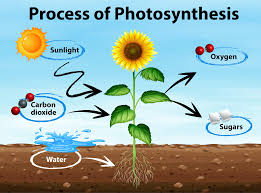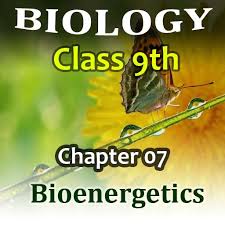9th Class Subject Biologi Chapter 7 Bioenergetics
9th Class Subject Biologi Chapter 7 Bioenergetics.
Introduction to Bioenergetics:
Definition and significance of bioenergetics in biological systems.
Understanding the role of energy in sustaining life processes.
Cellular Respiration:
Overview of cellular respiration as the process by which cells convert biochemical energy from nutrients into adenosine triphosphate (ATP), the universal energy currency of cells.
Exploration of the stages of cellular respiration, including glycolysis, the Krebs cycle (citric acid cycle), and oxidative phosphorylation (electron transport chain).

Photosynthesis:
Examination of photosynthesis as the process by which green plants, algae, and some bacteria convert light energy into chemical energy in the form of glucose.
Detailed discussion of the light-dependent and light-independent reactions of photosynthesis, including the role of chlorophyll, photosystems, and carbon fixation.

Energy Relationships in Ecosystems:
Understanding the flow of energy through ecosystems, including producers, consumers, and decomposers.
Exploration of trophic levels and energy pyramids to illustrate the transfer and loss of energy between organisms in a food chain.

Biological Energy Transformations:
Analysis of the efficiency of energy transformations in biological systems, considering factors such as energy transfer, conversion efficiency, and metabolic pathways.
Educational Objectives:
Gain a comprehensive understanding of the biochemical processes involved in cellular respiration and photosynthesis.
Explore the interconnectedness of energy flow within ecosystems and the significance of energy relationships in sustaining life.
Develop an appreciation for the efficiency and complexity of biological energy transformations and their implications for living organisms.
Conclusion:
Chapter 7, “Bioenergetics,” provides students with a foundational understanding of the energetic processes that underpin life on Earth. By exploring cellular respiration, photosynthesis, and energy relationships in ecosystems, students gain insight into how living organisms acquire, store, and utilize energy to sustain life processes.
Energy Acquisition:
Living organisms acquire energy from their surroundings in various forms, primarily through the process of photosynthesis in plants and certain bacteria, and through the consumption of organic molecules (such as carbohydrates, fats, and proteins) in animals and other heterotrophic organisms.

Energy Conversion:
Once energy is acquired, it is converted from one form to another through a series of biochemical reactions. In photosynthetic organisms, light energy is converted into chemical energy in the form of ATP (adenosine triphosphate) and NADPH (nicotinamide adenine dinucleotide phosphate), which are used to drive metabolic processes. In heterotrophic organisms, energy is extracted from organic molecules through cellular respiration, a process that involves the breakdown of glucose to produce ATP.
ATP Synthesis:
ATP is the primary energy currency of cells and is used to power a wide range of cellular activities, including biosynthesis, transport processes, and muscle contraction. ATP is synthesized through the process of phosphorylation, where a phosphate group is added to ADP (adenosine diphosphate) in the presence of energy, typically derived from the oxidation of organic molecules.

Metabolic Pathways:
Bioenergetics involves the study of metabolic pathways, which are interconnected series of biochemical reactions that occur within cells. These pathways include glycolysis, the citric acid cycle (Krebs cycle), oxidative phosphorylation, and the electron transport chain, among others. Each pathway serves a specific function in energy production, storage, or utilization.
Energy Transfer:
Bioenergetics also encompasses the study of energy transfer within cells and organisms. This includes the transfer of energy-rich molecules such as ATP and NADH between different cellular compartments and the coordination of energy utilization in response to changing physiological conditions.
Regulation and Homeostasis:
The processes of bioenergetics are tightly regulated to maintain cellular homeostasis and ensure the proper functioning of biological systems. Regulatory mechanisms, such as feedback inhibition and allosteric regulation, help to control the activity of enzymes and metabolic pathways in response to fluctuations in energy availability and metabolic demand.

Bioenergetics is the branch of biochemistry that focuses on how cells transform energy, often by producing, storing or consuming adenosine triphosphate (ATP). Bioenergetic processes, such as cellular respiration or photosynthesis, are essential to most aspects of cellular metabolism, therefore to life itself.

